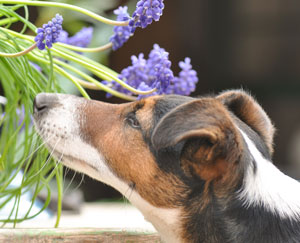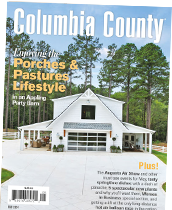 12 tips for designing pet-friendly yards for Fido and Fluffy.
12 tips for designing pet-friendly yards for Fido and Fluffy.
1. Know which plants are poisonous to pets.
Many popular outdoor plants are harmful to pets. Poisonous plants include azaleas, rhododendrons, amaryllis and bulbs such as tulips, narcissus and iris. For an extensive list, visit aspca.org.
2. Landscape with flowers and plants that are pet friendly.
Dog friendly garden plants include roses, daylilies, marigolds, magnolias, ornamental grasses, junipers and lilacs. Cat friendly plants (yes, they like to eat their greens) include catnip, catmint (bees and other pollinators like these flowers, too) and cat grass.
3. Keep select garden veggies separately fenced.
Foods like onions, tomatoes, chives and garlic are fine for human consumption, but they are toxic to pets. Fence off your garden if growing these vegetables.
4. Create a lawn with a pet-proof grass.
Lawncare experts recommend a variety of grasses such as Bermudagrass, Kentucky bluegrass, perennial ryegrass, fescue and zoysia for homes with dogs. All of these have thick roots, rapid growth rates and a tolerance for high traffic.
5. Give your cats some seclusion.
Cats enjoy a nice patch of grass for sunbathing, but they also like their privacy. Create nooks and crannies where they can hide by setting up a group of container plants or hollowing out spaces under existing plants where they can retreat from the world.
6. Consider a catio.
Think outdoor resort for your cat. These open-air, screened structures are often built on patios or around tree trunks and should include a cat bed, toys, climbing poles and varying levels where they can jump or lounge.
7. Design a landscape that includes shade and shelter.
If your dog spends a large part of the day outdoors, make sure it has access to shade, water and protection from the elements. If trees don’t create shady spots, create one with a pagoda, shade sail or doghouse.
8. Be sure water features are pet friendly.
An outdoor fountain or water feature can be a creative way to keep your pet hydrated. However, make sure the water circulates well to help prevent mosquitoes, and avoid water treatments that can harm pets. And remember: if pets can get in the water, they need to have a safe, easy way out, too.
9. Beware of food and garden waste, aka compost.
Although compost can enhance garden soil, some foods can create problems for pets. For instance, coffee, moldy food and certain fruits and vegetables, including some stems, leaves and seeds, are toxic to your pets.
10. Maintain your yard to keep fleas and ticks at bay.
Keeping your yard free from overgrowth, puddles and lawn debris helps to reduce the chance of fleas and ticks. Planting your garden with flea-repelling plants such as chamomile or lavender also is a natural way to help keep your pets safe from pests.
11. Play fetch with a toy bone instead of a stick.
When fetching a stick, your pooch accidentally could swallow part of the wood. Splinters can get stuck in its mouth and esophagus; larger fragments could cut the stomach lining and intestines or cause constipation. Play it safe with toys.
12. Avoid burning yard debris.
Burning trash releases chemicals that can lead to asthma and mouth burns, among other injuries, in humans and animals. Once the fire has been extinguished, the ash still contaminates the grass where your pets walk.










